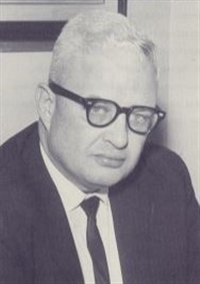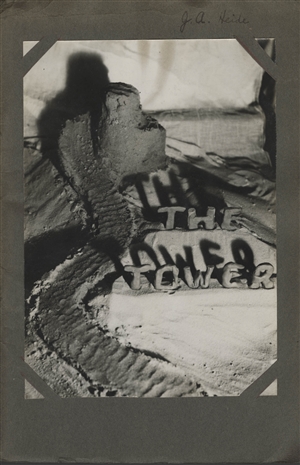Written by Riley Smith

John A. “Jack” Heide was hired at the University of Wisconsin-Whitewater, then called Whitewater State Teachers College, in 1948, where he took on the role of English Department Chair.[1] During the 1950s and 1960s, Heide greatly expanded the English department, eventually making it the largest department on campus at the time. Heide was a big proponent of keeping class sizes small, even the typically larger required freshman courses, to aid student/professor relationships.[2] His dedication to students extended outside of the classroom. In 1949, Heide organized a student writing club called the Wits and sponsored a student literary magazine named The Tower, a precursor to the Muse, UW-Whitewater’s current literature and arts magazine.[3]
The Wits club was known as an informal writing club, in which all students were invited to meet and discuss various literary topics, including members’ writings.[5] In the same year the club began, they published the first edition of The Tower to exhibit club members’ writings. The opening paragraph of the first edition reads, “In presenting this magazine, it is the intention of the club to give the public a chance to read samples of the types of creative writings at which club members have been working during the year.”[6] The magazine could be bought for a small fee.[7] The fee was then used to raise money for guest speakers to attend campus events; as Chair of the University Convocation Committee, Heide was in charge of planning said events. [8] While anyone could be a member of Wits, The Tower’s staff was hand-picked by the Wits club members.[9]

Eventually, the Wits club began hosting writing competitions where winning students would receive a cash prize of $5, later bumped up to $10, and a feature in The Tower.[11] At first, four categories were made available for submission: one-act play, fiction, non-fiction, and poetry.[12] In the 1960s, when the cash prize grew to $10, three more categories were added: essay, two-dimensional art, and three-dimensional art.[13] When these contests began, The Tower provided a way to highlight the writing and artistic talents of all students, not just the Wits club members.
Sadly, in April of 1968, Heide passed away from smoke inhalation during an accidental house fire. Weeks later, devastated by the loss, the UW-W campus dedicated the new humanities building to Heide.[14] The last edition of The Tower, in 1968, was also dedicated to his memory.[15]
You can browse issues of The Tower online at https://www.jstor.org/site/uww/.
[1] Richard C. Haney, Campus Cornerstones, University of Wisconsin– Whitewater: biographical sketches of the people for whom buildings & facilities are named (Whitewater, Wisconsin: University of Wisconsin– Whitewater, 1997), 59.
[2] Ibid., 59.
[3] Ibid., 59.
[4] Haney, Campus Cornerstones, 58.
[5] “Literary Club Discusses Art,” Royal Purple, Sept. 10, 1963.
[6] “The Word Before,” The Tower, 1949, 3.
[7] “Wits Plan To Publish New Literary Magazine,” Royal Purple, May 17, 1949.
[8] Haney, “Campus Cornerstones,” 59.
[9] “Wits Club to Choose TOWER Staff Tonight,” Royal Purple, March 14, 1961.
[10] Lee Ashton and John Leslie, The Tower, 1949.
[11] “Wits Contest Ends April 20,” Royal Purple, April 17, 1956.
[12] “Wits Contest Winners Told,” Royal Purple, May 8, 1956.
[13] “Winners of Wits Contest Are Chosen,” Royal Purple, May 8, 1962.
[14] Haney, “Campus Cornerstones,” 59.
[15] The Tower, 1968, 43.
